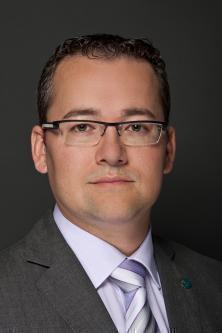

Protect your crown jewels!

Mechanical engineers are typically grounded and reserved, rarely prone to exuberance or oversharing. These tendencies apply to many areas, including the ever-present topic of espionage. I, for example, am frequently asked if there are any VDMA members who have spoken publicly about this subject to the media. The result? Not one company was found. Overall, the number of companies that have publicly disclosed spying activities and who have shared this discovery with the VDMA is quite small. But on the other hand, many industry experts see the fundamental threat as lying elsewhere. Nearly 80 percent of surveyed members see no impact from the NSA affair on their security strategy. This is what we have always suspected. The real threats are company insiders, Russia, China and the Middle East. Even France has already been known as an attacker for years.
If you were to describe a typical know-how thief, you probably would list the following characteristics: Wanted! Employee, male, age 36-45, middle management, with 6-10 years of experience at the company. It's possible that he would be responsible for more than 50 percent of the damages, but a precautionary dismissal is not recommended.
In addition to the currently omnipresent theme of "Cybersecurity," many companies are also dealing with the phenomenon of product piracy. A recent VDMA study found that more than 70 percent of machine and plant builders have been affected by product piracy. The damage has totaled nearly 8 billion euros alone for 2013. There are also consequences which are more difficult to ascribe a monetary value to, such as the loss of reputation, loss of market projection or potential for unjustified recourse claims.
If you were to look at who the typical forger and plagiarizer is, the chief culprit is China. But in the very next slot is Germany, accounting for 23 percent of this kind of activity. While plagiarism in China is often spoken of as being of inferior quality and function, the plagiarism originating in Germany can definitely be referred to as "high-tech plagiarism."
Four pillars for "know-how"
Despite the high costs and growing threat of piracy and know-how drain, preventative measures are underused. There is, for example, a lack of transparency in terms of profitability, procurement costs and process integration capabilities of technical measures. Companies also may see the implementation of such preventative measures as too complicated, and they may be fearful of backing the wrong horse, so to speak. The added value of solutions and concepts that aim to prevent piracy and know-how drain is difficult to determine, since the actual benefits of these practices are often only calculated in the event of their use in a specific, relevant situation. Meaning, you may not appreciate the value of them until you are actually threatened.
So, what should you do then? What do you do against spies, know-how thieves and plagiarizers? I recommend a protection strategy comprised of four pillars. The first pillar is the Federal Office for Protection of the Constitution. It has supported our members for many years by using its intelligence methods to search for moles and their tunnels. Take advantage of their professionals' expertises and get in touch with the Department of Economics Protection! The second pillar to find and protect your crown jewels. Trying to protect everything from everyone will not work. Estimations indicate that only five percent of know-how is actually protection worthy. Companies would do better ot focus on these areas. The third pillar is to use technological protection measures to discover plagiarism, to prevent counterfeiting and to mnimize know-how drain. Some of the measures you can enact include tracing and backtracking, embedded security and data leakage prevention. The noting of unusual working hours, data transfers or communications can contribute to the discovery of security breaches. The fourth and most important pillar is to raise your employees' awareness of these issues. They are your active firewall against the greed of competitors, governments and authorities.
Industry-Related VDMA Activites
Based on a VDMA initiative, from 2008 to 2011, ten BMBF-funded research projects on technical measures were carried out with a research budget of nearly 30 million euros. The practical results are still available for free and can be viewed at www.conimit.de.
In 2010, the VDMA launched the Products and Know-How Protection Working Group (AG Protect-ing). The group currently involves more than 40 suppliers of services, solutions and technologies related to product and know-how protection. A handbook developed by the working group, "Product and Know-how Protection", supports companies in the selection of appropriate protective measures against product piracy and know-how drain using a structured process model, which makes it easier for companies to understand what actions are necessary to protect key areas.
Take advantage of the recommendations listed in the VDMA guidebook, follow the four-pillar principle and do not lose sight of your goals when it comes to the selection of protective measures. Your employees will thank you.
About the author:
The VDMA (German Engineering Federation) is an association representing more than 3,000 small and mid-sized engineering companies in Germany. The VDMA helps represent these businesses' interests on both a national and international stage and helps provide expert advice to its members. Steffen Zimmermann, is the Managing Director of the project group for Product and Know-how Protection.
Weitere Informationen: www.vdma.org
